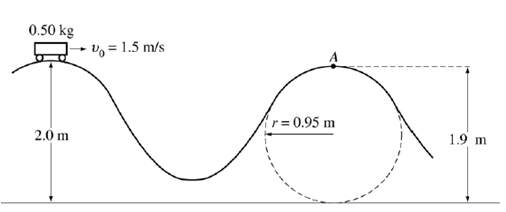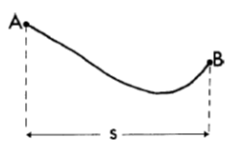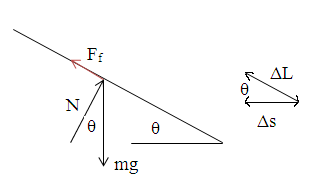
(a) An astronaut on a strange
planet finds that she can jump a maximum horizontal distance of 15 m if her
initial speed is 3 m/s. What is the free-fall acceleration on the planet?
(b) How much work is required to raise a 100 g block to a
height of 200 cm and simultaneously give it a velocity of 300 cm/sec?
Solution:
A designer is working on a new roller coaster, and she begins by making a scale model. In this model, a car of total mass m = 0.5 kg moves with negligible friction along the track shown. The car is given an initial speed v0 = 1/5 m/s at the top of the first hill of height 2 m. Point A is located at a height of 1.9 m at the top of the second hill, the upper part of which is a circular arc of radius 0.95 m.

(a) Calculate the speed of the car at point A.
(b) Calculate
the magnitude of the force of the track on the car at point A.
(c) In
order to stop the car at point A, some friction must be introduced.
Calculate the work that must be done by the frictional force in order to stop
the car at point A.
Solution:
A skier starts from rest at point A and slides down the hill, without turning or braking. The coefficient of friction is μ. When he stops at point B his horizontal displacement is s. What is the height difference between points A and B?

Solution:

A free particle with mass m is subjected to a
time-dependent force F(t) = F0 exp(-t/τ) for t > 0. F0 and
τ are constants.
(a) Find the velocity v(t) of the particle as a function of time, given that v
= 0 at time t = 0.
(b) What is the total work done on the particle by the force as t -->
infinity?